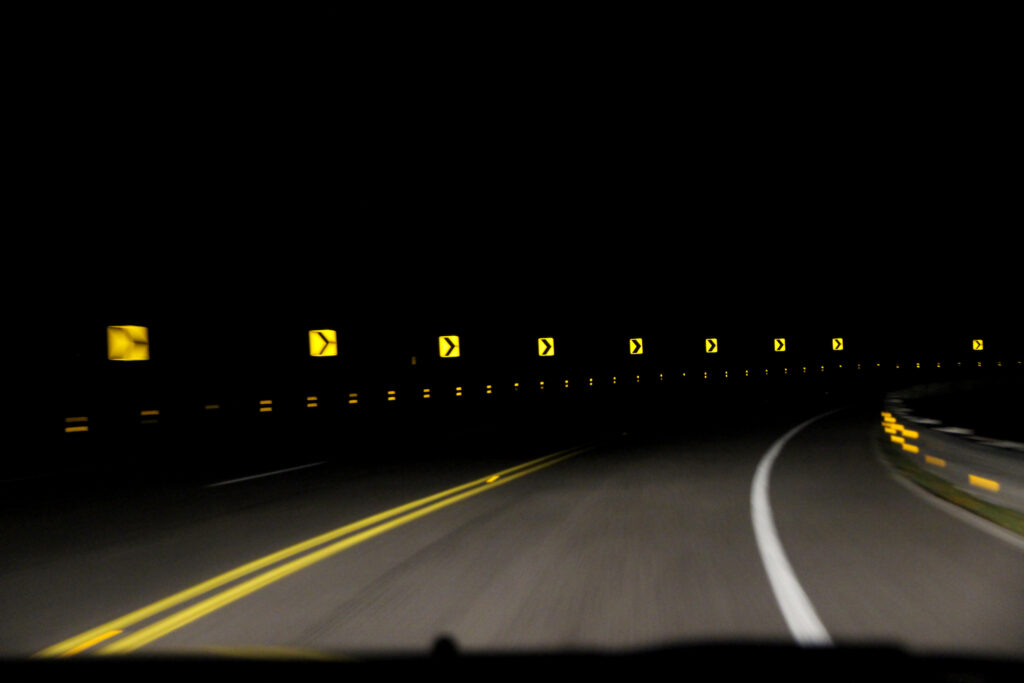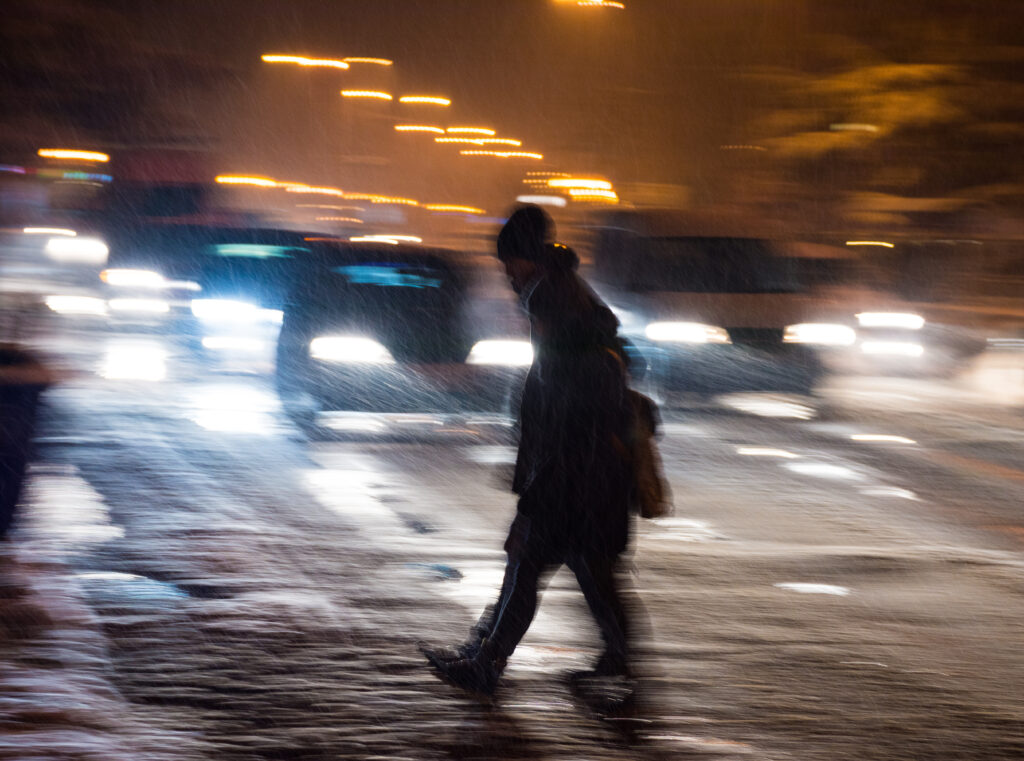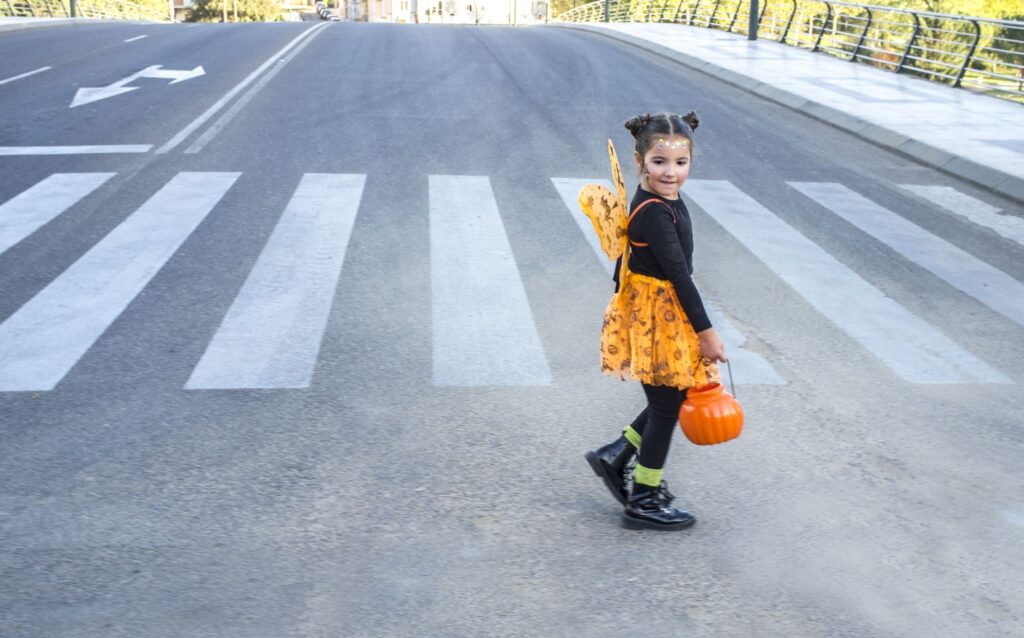The End of Daylight-Saving Time Leads to More Vehicle and Pedestrian Collisions
Leave a CommentDaylight saving (DST) ends on November 2, 2025, and with it the clocks will “fall back” an hour. While it is nice to gain an hour of sleep, the end of daylight-saving time also comes with a increase of vehicle crashes, injuries, and pedestrian fatalities. This phenomenon prompts the question: What is so dangerous about being a pedestrian at night?
When DST ends, clocks “fall back” an hour. Suddenly, evening commutes that used to be in daylight are now happening in twilight or darkness. Pedestrians continue their routines—walking home from work, jogging, or riding a bike— after daylight saving time. However, with less ambient light, drivers now have to detect the presence of pedestrians against a backdrop of dim light or glare from headlights. There are two problems facing drivers and pedestrians at night that can contribute to pedestrian/vehicle collisions: the degraded visual abilities of drivers and the low contrast of pedestrians. While capable during the day, the human visual system is severely limited at night. Both the visual ability to recognize objects and see fine detail and the ability to recognize low contrast objects like pedestrians are diminished at night. Humans experience a loss of color perception and hue as well.

Many road elements, such as lane markings and signs, are designed to be highly reflective at night. However, hazards that do not have retroreflective or active lighting properties often lack sufficient contrast to be visible to nighttime drivers.
The low contrast of pedestrians within a roadway environment is also a significant problem that contributes to pedestrian/vehicle collisions at night. At night, a driver has decreased sensitivity to fine details, color, and contrast, therefore they are less likely to detect and recognize pedestrians. Pedestrians can enhance their visibility to drivers by increasing their contrast through visibility aids such as retroreflective material. Pedestrians can be made more conspicuous to drivers through the proper placement of appropriate visibility aids. Conspicuity differs from visibility such that a conspicuous object is defined as one that ‘grabs’ the observer’s attention with minimal visual search and is easily recognizable. A visible object is defined as an object that simply contrasts with the background. It is vital that a pedestrian be conspicuous to a driver rather than just visible in order to capture a driver’s visual attention. The more conspicuous the pedestrian, the less likely there is a collision between the pedestrian and driver. Please see my previous article titled “The Big Difference Between Conspicuity and Visibility” for more information on the distinction between visibility and conspicuity.
In conclusion, the degraded visual abilities of drivers and the low conspicuity of pedestrians on the road contribute to pedestrian vehicle collisions at night. Drivers are largely unaware of their diminished visual abilities at night and may overdrive their headlights. Pedestrians typically lack sufficient contrast within their environment to be visible to a driver. It is not sufficient to be visible to drivers, but in order to enhance their safety, pedestrians must also be conspicuous to drivers. An awareness of a driver’s degraded visual abilities at night in addition to decreasing vehicle speeds and increasing the conspicuity of pedestrians may help decrease vehicle/pedestrian collisions at night.
Ellen Szubski, Ph.D., CXLT, CPSI, AHFP, is a human factors consultant at The Warren Group. She earned a Doctorate of Philosophy in Human Factors Psychology and a Master of Science in Applied Psychology from Clemson University. She did her dissertation on “The Influence of Pedestrian Biological Motion on Time-To-Collision Estimates at Night”. She is also a Certified XL Tribometrist, Certified Playground Safety Inspector and a Certified Associate Human Factors Professional (AHFP). Prior to entering the forensic field, Ellen planned and conducted experiments for a major bicycle manufacturer. She also conducted laser strike perception studies for the Department of Defense. Ellen applies her experience in Human Factors to the analysis of crash investigations and other personal injury matters. These matters often include collisions involving vulnerable road users and drivers, driver distraction, and slips, trips, and falls. She utilizes her knowledge of OSHA regulations, codes, and standards in her analysis of premises liability incidents and safety consulting. Ellen is a current member of the Human Factors and Ergonomics Society (HFES) and it’s Forensic Professional Technical Group.




